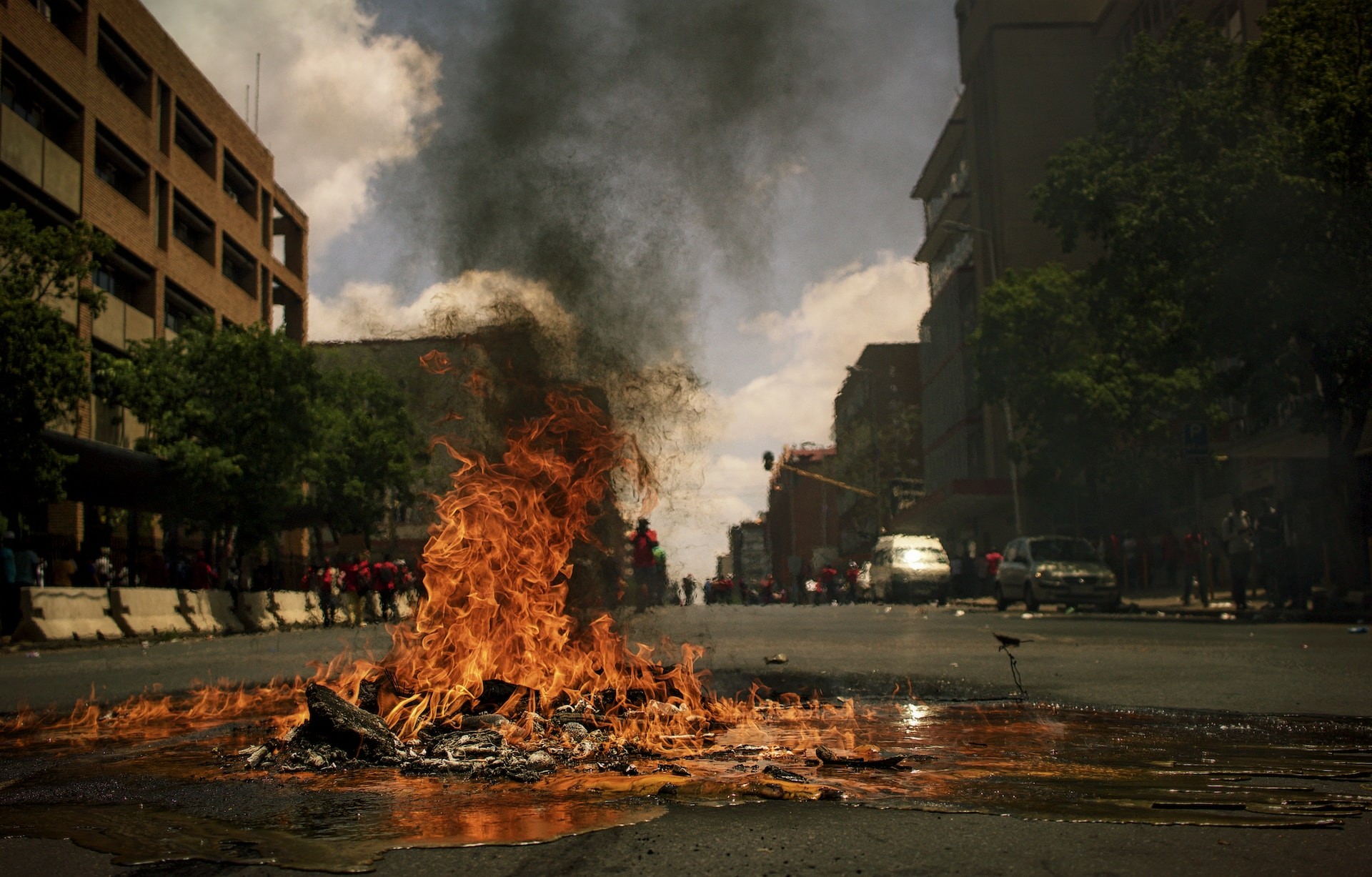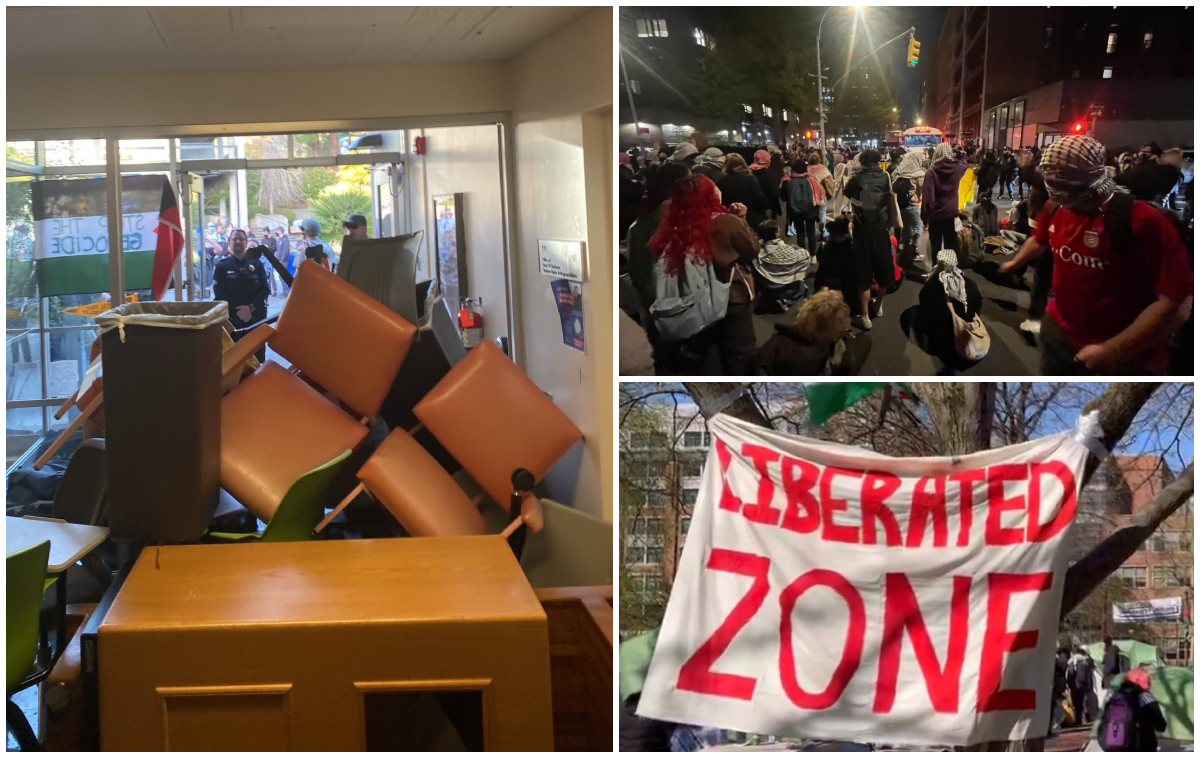Filed under: Analysis, Anarchist Movement, Critique, US, White Supremacy

Reflections on contemporary revolt, social movements, and racial dynamics within them from a reading group in so-called Minneapolis, MN.
The following reflections have been prompted by the Race Treason Discussion Group, a group that met weekly in Minneapolis beginning in the Summer of 2022. The group aimed to analyze the dynamics of largely non-black radical spaces and how they related to struggles for black liberation. The texts discussed sparked many generative conversations both in and outside of this weekly meeting and have inspired the ideas below. The reading group is set to resume for the summer starting May 24th 2023.
There are two primary historical settings—besides our current situation—that have been examined in this group for illustrating the potential for race treason—that is, when revolutionary movements were able to most successfully cross racial lines. First is the period in which Turtle Island was first being settled and what we call the United States was beginning to take shape, and second is the mid-20th century factory floor. The reason for the first should be clear; it was a time before such strict codifications of race were deployed and its terms of such were still porous, thus offering a wealth of insight into the motley alliances possible at the time. Yet, it is in the context of this second setting that we find the origins of the Race Traitor journal, which informs much contemporary thought on race treason, including that of the discussion group. In what follows, I intend to contrast these historical situations with the one we are in today, in order to briefly sketch some basic limits that we will have to face and why it is necessary to confront these limits.
To begin, the maroons of the 16th and 17th century are fundamental cornerstones to imagining any revolutionary force in this country, especially a multi-racial one. But it is crucial to recognize that race was much less of an obstacle for them at the time—Russell Maroon Shoatz wrote that “during this early period, race, as it’s viewed today, made little difference. After all, one could find Africans, Amerindians and whites all equally enslaved on the same plantations, in the towns and on ships.” It was only during the mid-17th century that we see race develop through the legal code. According to Achille Mbembe, “between 1630 and 1680, a bifurcation took place that gave birth to plantation society as such…The distinctions between White servants and Black slaves became much sharper.”
Even through the 18th century, race remained a more fluid concept than what we experience today. Peter Linebaugh and Marcus Rediker explain that “racial typing in New York remained fluid, open, often ambiguous” and that for many, white people were “the rich, the people with money, not simply the ones with a particular phenotype of skin color.” It is in this context that we must understand the maroons and uprisings of the time.
Not only was the racial ideology we are so familiar with far less entrenched than it is today, but the material segregation that comes with it was less developed as well. For example, Linebaugh and Rediker explain that it was only as part of the repression following 1741’s aborted multi-racial revolt in NYC that the city government “attacked the city’s low tippling houses, criminalizing black-white cooperation and controlling the sites where multiracial conspiracies might unfold.”
Fast forward a little over two hundred years to the factories of the midwest beginning to hire black workers for the first time due to labor shortages due to a world at war. While intra-factory segregation remained incredibly stark, it brought together people both black and white under one roof, and more importantly, under one boss. Rather than trying to rally workers around the issues that effected everybody, writer Noel Ignatiev pushed for white workers (of whom he was one) to actively support the black workers in their grievances in order to develop a stronger movement against the boss. In this way, Ignatiev suggests that “the active rejection, through struggle, of [white-skin privileges] is the precondition for the participation by white workers in the struggle of workers as a distinct social class.”
Unfortunately, this is not the situation we find ourselves in today. The factories Ignatiev and others worked at have all but closed. Looking for a new terrain of struggle, some Italian autonomist theorists posited the notion of “the social factory” just as the Situationists investigated “the revolution of every-day life.” If we take up this premise that everyday life itself constitutes the terrain we find ourselves struggling in, then we must admit that segregation is a formidable force to contend with. While it formally ended before many of us were born, is still shapes our cities and our lives in profound ways. Thus we lack a clear direction for how to even begin connecting with others across racial lines. As Shemon Salam recently remarked, “unlike workplace struggles, where workers can potentially develop a more intimate perspective of each other, urban rebellions are composed overwhelmingly of strangers.”
Without the factory bringing masses of black and white workers together, nor anything like the lawless taverns where black and white conspiracies used to emerge, we are faced with the challenge of identifying and developing new spaces of encounter that can form the basis of this multi-racial revolutionary movement. This is no easy task, but I believe it is a vital one.
As Salam writes with Arturo Castillion “while the ultra-left has correctly oriented itself towards the riots, and is in sync with the Black proletariat in highpoints of struggle, the white ultra-left returns to a segregated way of life during times of quiet.” While some of those in what Salam and Castillion refer to as the “white ultra-left” may be satisfied with this occasional intersection, such as K. Aarons when he writes that “the geometry of self-abolitionist solidarity is therefore one of parallel rather than convergent lines,” I am more interested in the potential found in their convergence.
Ron March, of the Dodge Revolutionary Union Movement (D.R.U.M.), said in the 60’s that when white workers approached them to offer support, they insisted that “we could work best by organizing alone” and “told whites to do the same thing. Once they did that, we could work with them on a coalition basis.” This insight can help clarify some immediate actions for us to take. Rather than either subsuming our efforts to other groups on the mere premise of being black-led, or calling up a few black comrades to serve as tokens to disguise the problem, we must acknowledge and name racial segregation as it manifests in our spaces and movements. It is crucial that we develop a robust understanding of and sensitivity to the racial dynamics that define our lives—individually and collectively—before we can expect to seriously develop lasting multi-racial alliances.
It is these alliances which could not only propel an uprising like what we experienced in 2020 to unprecedented heights, but also allow us to construct new forms of being together prompted by these new relationships. As Ignatiev said of the white workers, “the Black movement represented for them an alternative way of life, a way that was better and more attractive than the usual passive, subordinated life they were accustomed to. Anyone who has ever taken part in collective struggle knows that, regardless of how they may have acted afterwards, the experience left a lasting impression on them.”
References
All references can be accessed at the Race Treason Discussion Group website library.
K. Aarons, “No Selves To Abolish: Afropessimism, Anti-Politics and the End of the World”, Mute Magazine, February 29th 2016.
Dan Georgakas and Marvin Surkin, Detroit I Do Mind Dying: A Study In Urban Revolution (St Martins Press, 1975).
Noel Ignatiev, “Black Worker, White Worker” in Treason to Whiteness is Loyalty to Humanity (Verso, 2022).
Peter Linebaugh and Marcus Rediker, The Many Headed Hydra: Sailors, Slaves, Commoners, and the Hidden History of the Revolutionary Atlantic (Beacon Press, 2000).
Achilles Mbembe, Critique of Black Reason (Duke, 2017).
Shemon Salam, “Race and Organization after the George Floyd Uprising” Spirit of May 28th, April 6th 2022.
Shemon Salam and Arturo Castillion, “The Return of John Brown: White Race-Traitors in the 2020 Uprising” Ill Will, September 4th, 2020.
Russell Maroon Shoatz, “The Real Resistance to Slavery in North America” in Maroon The Implacable: The Collected Writings of Russel Maroon Shoatz (PM Press, 2013).
photo: Pawel Janiak via Unsplash





